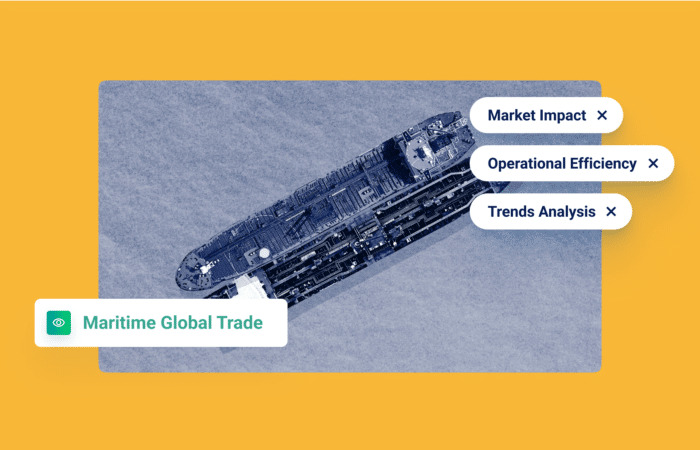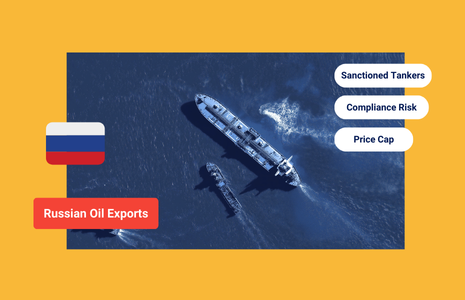Assessing Ship-to-Ship Detection Tech: A Quick Guide

What’s inside?
The Dichotomy of Ship-to-Ship Operations
There were more than 460,000 ship-to-ship (STS) operations in 2022. This is obviously a common and usually positive maritime maneuver that is critical for helping vessels of all types to fuel up and for maintaining the smooth operation of the trading and shipping industries.
But the risk of trading or doing business with a vessel that was engaged in an illicit ship-to-ship meeting, or inadvertently engaging with a risky vessel yourself, could result in massive financial and reputational damage.
Illicit ship-to-ship (STS) operations are mainly used today to conceal illegal activities, such as oil and grain smuggling. This phenomenon has significantly increased in the last couple of years with the emergence of sanctions on Iran, Venezuela, and now Russia. STS operations are continuously evolving to better hide the origin of the smuggled cargo onboard. Fortunately, illicit STS operations don’t have to be business blockers when looked at in the proper context. For instance, in Q2 2023, there were more than 50,000 tanker-to-tanker STS engagements. Only 1.7% were flagged as illicit transfers by Windward’s Maritime AI™ platform.

The conclusions seem obvious – or at least it’s obvious that you and your organization should say “no” to:
- Manual methods: it is impossible to manually monitor every STS meeting and ensure your organization is not exposed to formidable risk.
- False positives: organizations must be able to clear business and complete trades quickly. The answer is NOT to view all STS meetings suspiciously, because only a tiny percentage actually involve illicit behavior in the context of sanctions compliance.
- Inferior models & technology: not all models for analyzing ship-to-ship engagements are created equally and can accurately flag STS operations.
What should you be looking for when evaluating ship-to-ship detection technology?
Quick Checklist for STS Model Evaluation
Government entities looking to protect their borders, traders tracking the destination of cargo, and shipping companies looking to mitigate risks while still growing their business, must all have the most accurate contextual visibility to avoid false positives and focus on STS engagements that are actually risky for them (different types of organizations have different risk appetites).
The right STS model should go beyond heuristic indicators and look at the behavioral context of each meeting (not just the ships’ proximity to one another).
Here are some initial questions AI-powered STS models should be able to answer:
- Where did the ships come from?
- Where are they going?
- Are they the same class?
- Was the meeting taking place in a sanctions-prone hub?
In line with increasing complexity, constant evolution of deceptive shipping practices and STS engagements, plus feedback from customers, Windward decided to take its best-in-industry, patent-pending model to the next level and offer even deeper explainability and visibility for illicit STS operations.
We upgraded our innovative STS model at the beginning of this summer (2023). It now includes all of the following features and capabilities. Any technology you are considering should include identification of vessel class and involvement in additional suspicious behaviors, as well as these must-haves:
- STS events following port calls in sanctioned regimes should only be flagged as risky for vessels of the same class, and until the next port call
- STS events following location (GNSS) manipulation will be flagged high risk for vessels of the same class, and until the next port call
- STS events involving a vessel on an SDN list will be flagged high risk, regardless of vessel class or size
This functionality will significantly decrease the risk of suspected vessels and completely clear others for business.
Take another step forward by reducing false positives and obtaining the most accurate risk recommendations to enable more business. With Windward’s unique and upgraded STS model, users can make sure they are keeping their business safe from financial, regulatory, and reputational risks.












